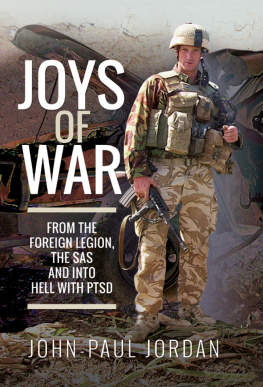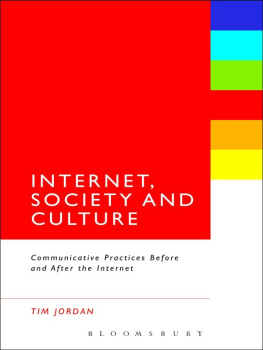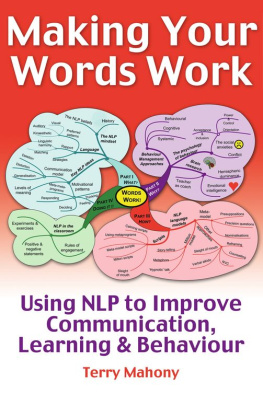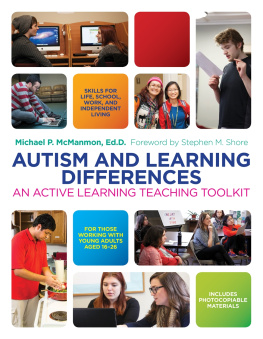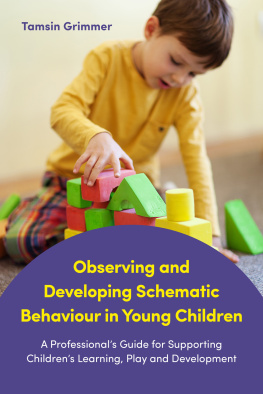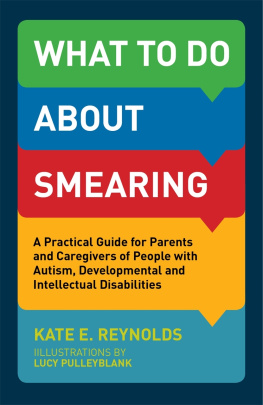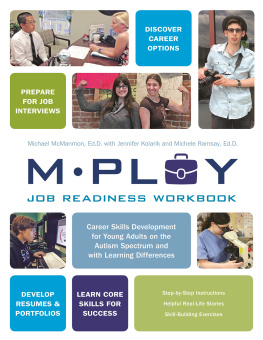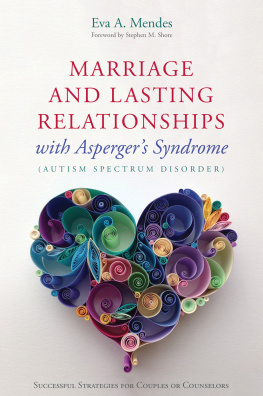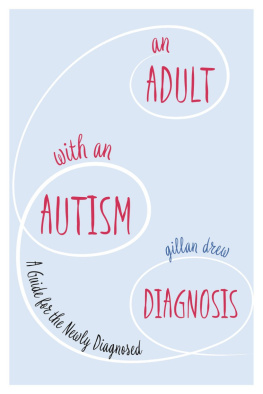References
AIRD, R. & LISTER, J. (1999). Enhancing provision for pupils with autism within a school for pupils with severe learning difficulties. In Jones, G. (Ed.) GAP: Good Autism Practice. Issue I Birmingham: University of Birmingham School of Education.
ATTWOOD, A., FRITH, U. & HERMELIN, B. (1988). The understanding and use of interpersonal gestures by autistic and Down's syndrome children. Journal of Autism and Developmental Disorders, 18, 241-257.
BARON-COHEN, S. (1995). Mindblindness: An Essay on autism and theory of mind. London: MIT Press.
BEYER, J. & GAMMELTOFT, L. (1999). Autism and Play. London: Jessica Kingsley.
BIKLEN, D. (1990). Communication unbound: autism and praxis. Harvard Educational Review, 60, 291-315.
BLUNDEN, R. & ALLEN, D. (1987). Facing the Challenge: An ordinary life for people with learning difficulties and challenging behaviour. London: Kings Fund Centre.
BONDY, A. S. & FROST, L. A. (1994). The Delaware autistic program, in Harris, S. L. & Randleman, J. S. (Eds). Preschool Education Programs for Children with Autism. Austin: Pro-Ed.
BRECHIN, A. & SWAIN, J. (1990). Communication: participating in social relationships. Open University Workbook. Milton Keynes: Open University Press.
BRUNER, J. & FELDMAN, C. (1993). Theories of mind and the problem of autism. In Baron-Cohen, S., Tager-Flusberg, H. & Cohen, D. J. (Eds). Understanding Other Minds: Perspectives from autism. Oxford: Oxford University Press.
CHRISTIE, P., NEWSON, E., NEWSON, J. & PREVEZNER, W. (1992). An interactive approach to language and communication for non-speaking children. In Lane, D. A. & Miller, A. (Eds). Child and Adolescent Therapy: A Handbook. Milton Keynes: Open University Press.
CLEMENTS, J. & ZARKOWSKA, E. (2000). Behavioural Concerns and Autistic Spectrum Disorders. London: Jessica Kingsley.
COPELAND, J. (1973). For the Love of Ann. London: Arrow Books.
DEPARTMENT OF EDUCATION AND SCIENCE (1970). The Education Act. London: HMSO.
DEPARTMENT FOR EDUCATION (1994). Code of Practice. London: Department for Education.
DONNELLAN, A. LAVIGNA, G. W. NEGRI-SHOULT, N. & FASSBENDER, L. (1988). Progress Without Punishment: Effective approaches for learners with behaviour problems. New York: Teachers' College Press.
GEDYE, A. (1989). Episodic rage and aggression attributed to frontal lobe seizures. Journal of Mental deficiency research 33, 369-79.
GERLAND, G. (1997). A Real Person. London: Souvenir Press.
GILPIN, R. W. (Ed.) (1993). Laughing and Living with Autism: A collection of 'real-life' warm and humorous short stories. New York: Future Horizons.
GRANDIN, T. (1995). How people with autism think. In Schopler, E. & Mesibov, G. B. (Eds). Learning and Cognition in Autism. New York: Plenum.
HARRIS, J., COOK, M. & UPTON, G. (1996). Pupils with Severe Learning Disabilities who Present Challenging Behaviour: A whole school approach to assessment and intervention. Birmingham: BILD.
HOBSON, R. P. (1993). Autism and the Development of Mind. London: Erlbaum.
HOWLIN, P. (1997). Autism: Preparing for adulthood. London: Routledge.
HOWLIN, P. & MOORE, A. (1997). Diagnosis in autism: a survey of over 1200 patients. Autism: The International Journal of Research and Practice, I. 135-162.
IRLEN, H. (1995). Viewing the world through rose tinted glasses. Communication, 29, 8-9.
JORDAN, R. R. (1990). Report on the Observer -Project for the Evaluation of the Option Institute. Hatfield Polytechnic National Autistic Society. pp. 35.
_____(1989) 'Understanding and use of speaker addressee pronouns by autistic children'. Brit. J. Disorders of Communication 24, 3, 9-
_____ (1997). Education of Children and Young People with Autism. Paris: Unesco Ed 981WS/7.
_____(1999). Autistic Spectrum Disorders. An introductory handbook for practitioners. London: David Fulton.
JORDAN, R. R. & JONES, G. (1996). Educational Provision for Children with Autism in Scotland: Final report of a research project for the SOEID. Birmingham: University of Birmingham School of Education.
_____ (1997). Interchange: Educational provision for children with autism in Scotland. 46. Edinburgh: SOEID.
JORDAN, R. R., JONES, G. & MURRAY, D. (1998). Educational Interventions for Children with Autism: A literature review of recent and current research. Sudbury: fee,
JORDAN, R., MACLEOD, C. & BRUNTON, L. (1999). Making special schools 'specialist': A case study of the provision for pupils with autism in a school for pupils with severe learning difficulties. In G. Jones (Ed.) GAP: Good Autism Practice. Issue 1 Birmingham: University of Birmingham School of Education.
JORDAN, R. R. & POWELL, S. D. (1994). Whose curriculum? Critical notes on integration and entitlement. European Journal of Special Needs Education, 9 27-39.
_____(1995a). Factors affecting school choice for parents of a child with autism. Communication, Winter, 1995 5-9
_____(1995b). Understanding and Teaching Children with Autism. Chichester: Wiley.
KANNER, L. (1943). Autistic disturbance of affective contact. Nervous Child, 2, 217-250.
KAUFMAN, B. (1994). Son Rise: The miracle continues. California: Kramer.
KEENAN, M., KERR, K. P. DILLNBURGER, K. (2000). Parents' Education as Autism Therapists. London: Jessica Kingsley.
KRAIJER, D. (1997). Autism and Autistic-like Conditions in Mental Retardation. Abingdon: Swets & Zeitlinger.
LAVIGNA, G. W. & DONNELLAN, A. M. (1986). Alternatives to Punishment: Solving behaviour problems with non-aversive strategies. New York: Irvington.
LIBBY, S., POWELL, S., MESSER, D., JORDAN, R. (1998). Spontneous play in children with autism: A reappraisal. Journal of Autism and Developmental Disorders. 28, 487-497.
LOVAAS, O. I. (1981). Teaching Developmentally Disabled Children: The me book. Baltimore: University Park Press.
_____(1987). Behavioural treatment and normal intellectual and educational functioning in autistic children. J. of Consulting and Clinical Psychology" 55, 3-9.
LOVAAS, O. I. SCHAEFFER, B. & SIMMONS, J. Q. (1965). Experimental studies in childhood schizophrenia: Building social behaviours by use of electric shock. Journal of Experimental Personality Research, I, 99-109.
LOVAAS, O. I. & SIMMONS, I. Q. (1969). Manipulation of self destruction in three retarded children. Journal of Applied BehaviourAnalysis, 2, 143-150
LOVETT, H. (1996). Learning to Listen: Positive approaches and people with different behaviour. London: Jessica Kingsley.
McGEE, J. J., MENOLASCINO, F. J., HOBBS, D. C. & MENOUSEK, P. E. (1987). Gentle Teaching: A non-aversive approach for helping persons with mild retardation. New York: Human Sciences Press.
MESIBOV, G. B. (1997). Formal and informal measures of the effectivene of the TEACCH program. Autism: The International Journal of Research and Practice, 1, 25--35.
MORGAN, H. (1996). Adults with Autism: A guide to theory and practice. Cambridge: Cambridge University Press.
NIND, M. & HEWETT, D. (1994). Access to Communication. London: David Fulton.
NOENS, I. & VAN BERCKALAER-ONNES, I. (2004). Making Sense in a Fragmentary World: Communication in People with Autism and Learning Disability, Autism: The International Journal of Research and Practice, 8, 197-218.
OLIVER, C. (1986). Self-injurious behaviour. Taking Sense, 33, 23-24
PARK, C. C. (1986). Social growth in autism: A parent's perspective. In Schopler, E. & Mesibov, G. B. (Eds). Social Behaviour in Autism. New York: Plenum Press.
PEETERS, T. (1997). Autism: Theoretical Principles into Practice. London: Whurr Publications.
PEETERS, T. & GILLBERG, C. (1999). 2nd Edition. Autism: Medical and Educational Aspects. London: Whurr.
PEETERS, T. & JORDAN, R. (1999). What makes a good practitioner in the field of autism? In Jones, G. (Ed.) GAP: Good Autism Practice. Birmingham: University of Birmingham School of Education, pp. 85-90.





